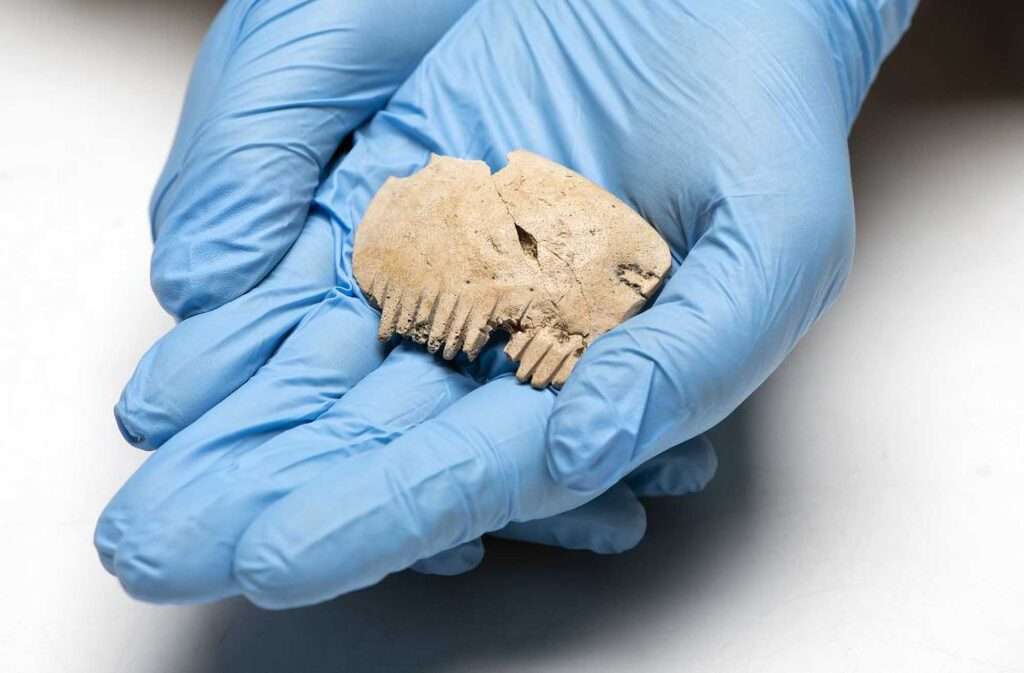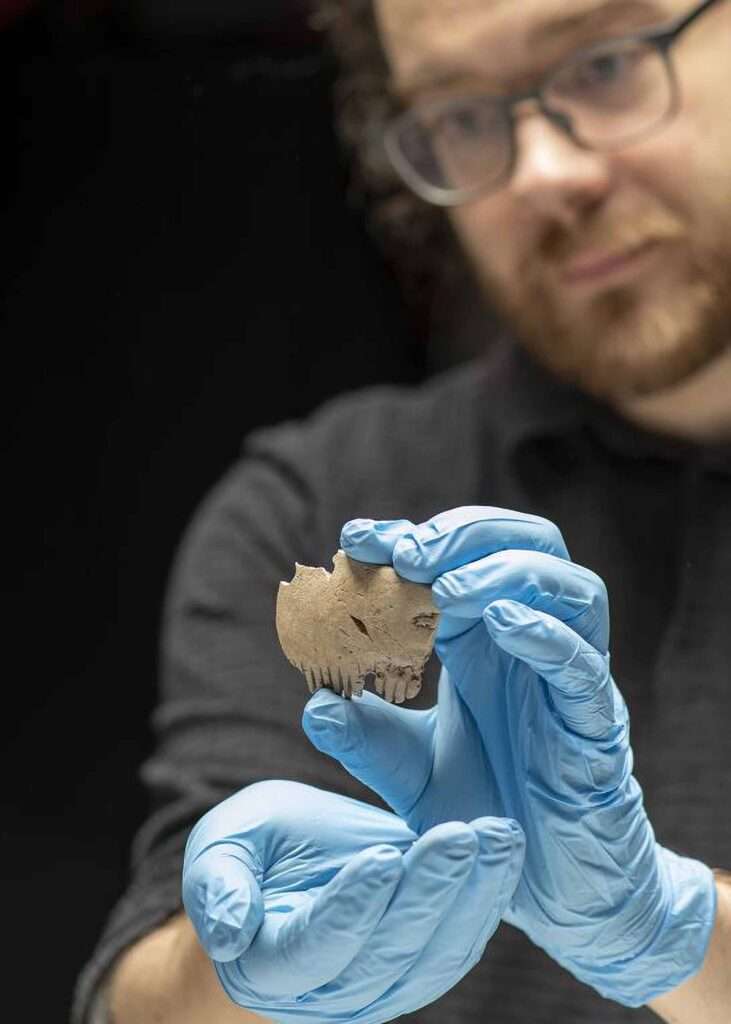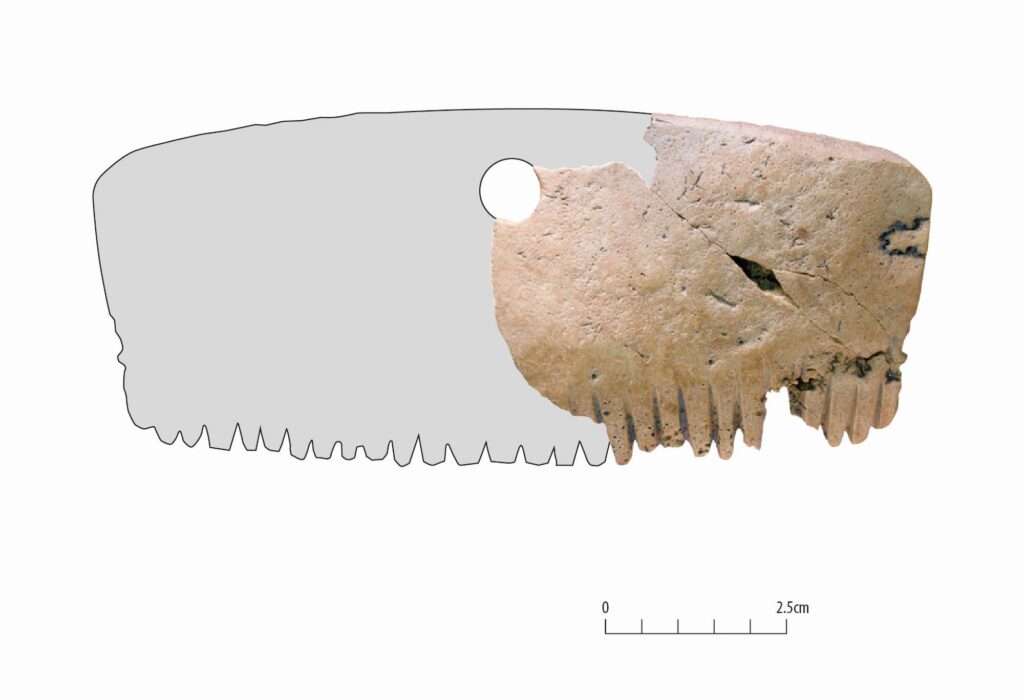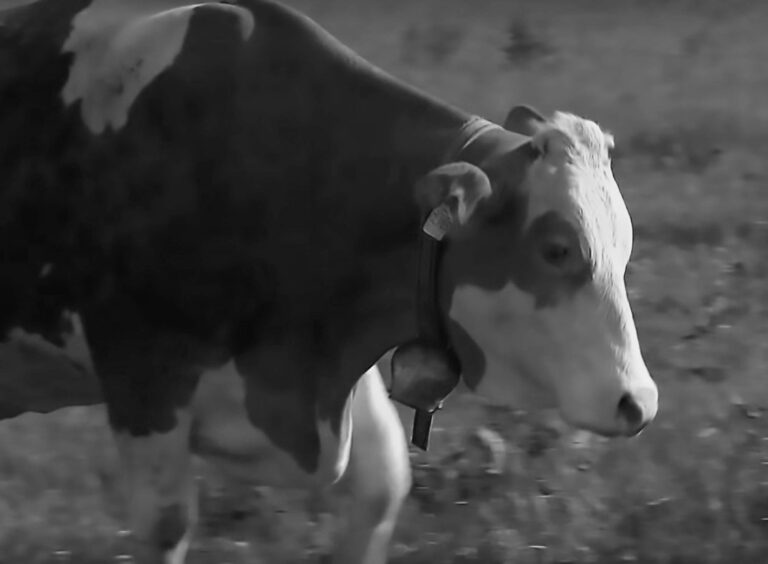A grim Iron Age comb made from part of a human skull has been unearthed by archaeologists at a dig in Cambridgeshire.
The comb – one of only three of its kind ever found – is about the size of a jam jar lid and has fine teeth cut into one end by craftsmen around 2,000 years ago.
It is not known whether the find was used as a comb for tangled hair or as a decoration.
It could – say experts – even have been part of the skull of an important tribal leader worn to keep his power alive.
A hole drilled through the bone shows it could have been worn as an amulet.
The comb was discovered by archaeologists from the Museum of London Archaeology (MOLA) in the English village of Bar Hill.
The only two other similar finds were also made in Cambridgeshire.
The item was one of 280,000 unearthed as part of excavations in a road improvement scheme between 2016 and 2018.

It is believed to date from 750 BC to 43 AD.
Boffins say objects made from human or animal bones were used as part of everyday life in Iron Age Britain.
MOLA Finds Team Lead Michael Marshall said in a statement obtained by Newsflash: “It is possible this fascinating find represents a tradition carried out by Iron Age communities living solely in this area of Cambridgeshire.
“To be able to see such hyper-local influences in groups of people living over 2,000 years ago is truly astonishing.

“The Bar Hill Comb may have been a highly symbolic and powerful object for members of the local community.
“It is possible it was carved from the skull of an important member of Iron Age society, whose presence was in some way preserved and commemorated through their bones.”
Dr Steve Sherlock, Archaeology Lead for the National Highways A14 Cambridge to Huntingdon Improvement Scheme, said: “This is a further example of the spectacular results from the excavations for the A14 improvements, adding detail and insight into our understanding of the human activity across Cambridgeshire and beyond.”

The Ananova page is created by and dedicated to professional, independent freelance journalists. It is a place for us to showcase our work. When our news is sold to our media partners, we will include the link here.




